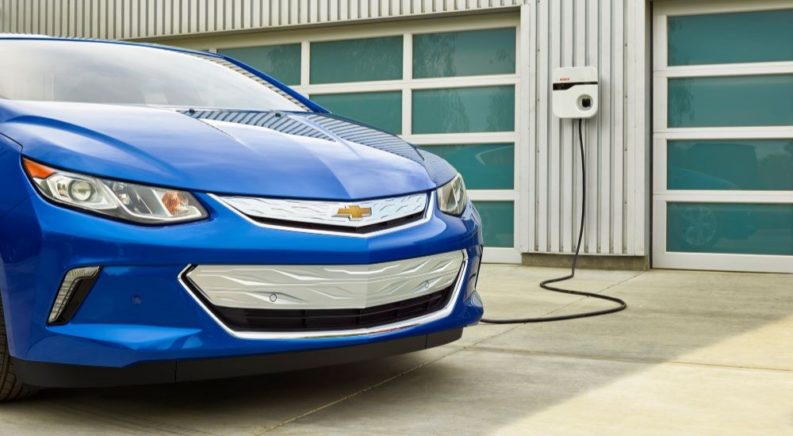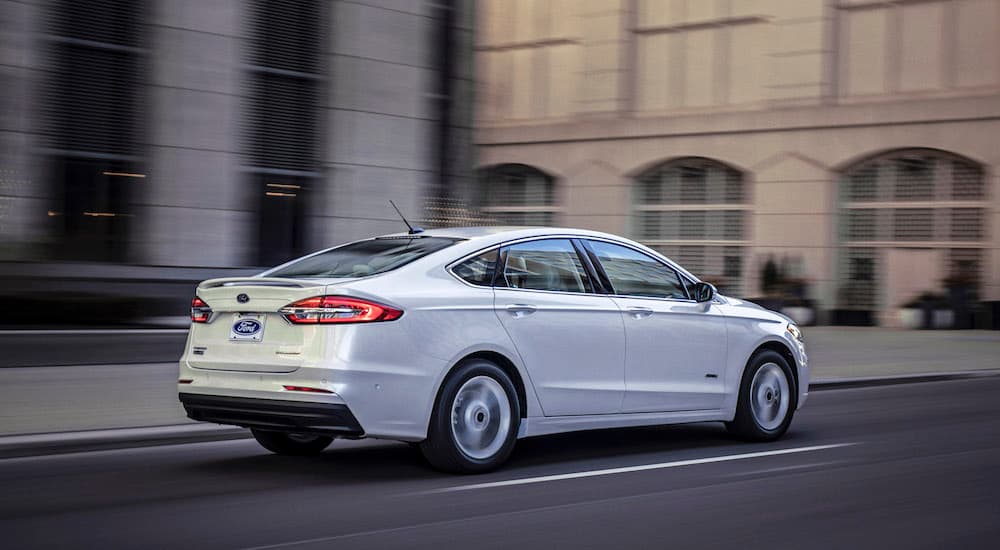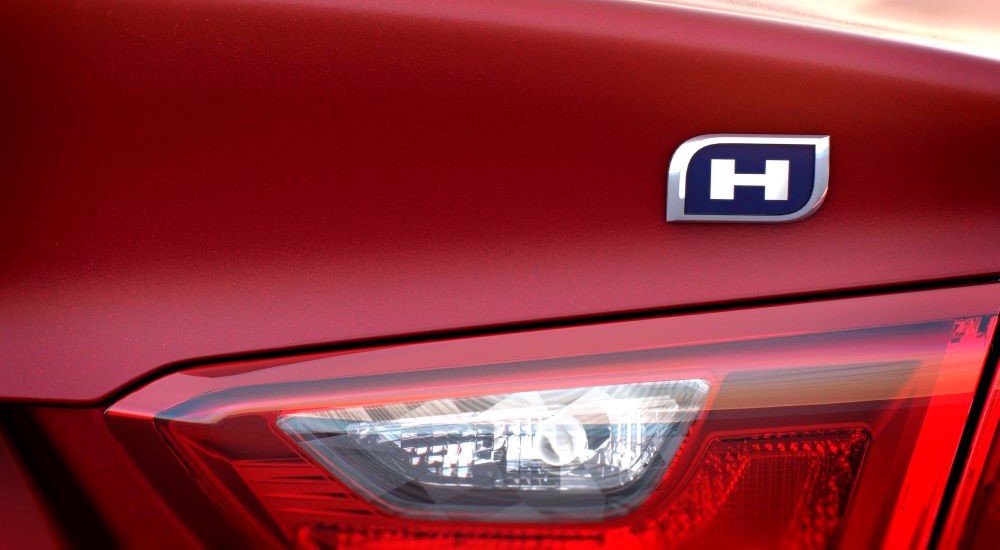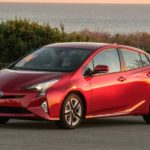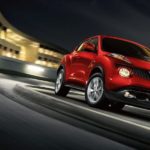From traditional hybrids that get their extra fuel efficiency from regenerative braking to plug-in hybrids to full-on electric vehicles, cars powered by electricity are getting increasingly popular these days. Despite the trends overall going in their favor, there are several hybrids that you can only find on the used car lot because, for one reason or another, they’re no longer in production. Often this isn’t because there was anything wrong with the model but because an automaker wanted to simplify its lineup.
So today, we’re going to take a look back at five defunct hybrids that deserve an extra moment in the spotlight. These trailblazing models offered efficient powertrains before it was cool, each with features that make it worth celebrating. So let’s go on a cruise down memory lane. Don’t worry; you won’t have to stop for gas along the way.
#1. The Chevy Volt
When it debuted at the North American International Auto Show in January 2007, the Chevy Volt made history as the very first series plug-in hybrid electric vehicle (PHEV) concept car ever to be brought forth by a major automaker. At that point, hybrids were almost exclusively vehicles that used regenerative braking (capturing energy that’s usually lost to heat during deceleration) to power a battery to give them a little extra MPG. A plug-in hybrid uses both regenerative braking and EV-style charging, where you plug the battery directly into a power source like a charging station. This allows a PHEV to get lots of power relatively quickly, compared to traditional hybrids, giving them even better mileage and allowing them to have something new: an all-electric range.
In a traditional hybrid, the electric motor always assists the gas-powered engine, never completely running the show. But the more powerful batteries in PHEVs are able to be the sole power source for their vehicles for a limited time. This range is fairly limited for many plug-in hybrids, around 20 miles or so, but by the Volt’s 2019 model year, it was capable of driving up to 53 miles powered purely by electricity. That means that plenty of commuters can essentially use the Volt as an electric vehicle most of the time but have the gas engine there as a backup for longer trips.
While the Volt was groundbreaking from the get-go and continued to be an impressive hybrid throughout its two generations on the market, it never quite got the sales figures that Chevrolet was hoping for. Americans have been drifting away from sedans and hatchbacks and moving toward crossovers and SUVs for decades. Other hybrids like the Prius have more name recognition, which likely made it hard for the Volt to compete in an already limited market. Chevy discontinued the model after the 2019 model year, shifting its green energy focus to the all-electric Bolt EV and, later, the larger Bolt EUV. But as PHEVs continue to be popular among drivers looking to transition to clean energy, it’s clear that the Volt’s legacy lives on.
#2. The Ford Fusion Hybrid
The Ford Fusion was a versatile mid-size sedan with a wide range of powertrains and configurations, including a hybrid option starting in the 2010 model year. Where some hybrid powertrains were either late to the game or weren’t offered consistently over the years, the Fusion’s hybrid version was impressive for its longevity: it was available for eleven consecutive model years, only leaving the market when the Fusion itself was discontinued after the 2020 model year. In a trend that’s about to become quite familiar on this list, Ford decided to drop its sedan in order to focus on its more popular offerings, like trucks and SUVs. However, it’s been announced that Ford will be reviving the nameplate soon with a wagon-style SUV called the Fusion Active, and rumor has it that both hybrid and plug-in hybrid powertrains will likely be part of the lineup.
#3. The Buick Regal eAssist
With its sports sedan, the Regal, Buick wanted hybrid technology to not only improve fuel efficiency but improve performance without hindering the driving experience. So while the company’s eAssist “mild hybrid” system was never in the running to set any records for its mileage reduction, it was a unique attempt to bring hybrid technology to a different demographic. The battery was touted for being not just effective but lightweight and unobtrusive, giving the Regal a little extra boost of power that helped it accelerate faster but not affecting its sound profile or braking feel in a way that made it drive “like a hybrid.”
For the 2012 model year, this was a fairly early attempt to go beyond the normal bounds of hybrid technology and try something new. Today, we’re seeing this in several segments of the auto market as brands try to expand beyond the demographic of “climate-conscious” consumers and tout the wide range of applications for which hybrid and electric vehicle technology can be used. For example, Ford’s Pro Power Onboard, a feature on the F-150 Hybrid and all-electric F-150 Lighting, can use the truck’s powerful battery to power a worksite, campsite, or even a whole house. Hybrid and electric trucks also often boast higher horsepower stats than their gas-powered counterparts.
The eAssist powertrain was dropped from the Regal’s lineup after the 2016 model year, bringing the most fuel-efficient model available down from a combined fuel economy rating of 28 MPG in the 2016 model year to 23 MPG in the 2017 model year, which certainly feels like a step backward. Interestingly, according to the EPA, the average 2023 vehicle gets 28 MPG, so perhaps the Regal eAssist was, in a way, “the car of the future.” The Regal itself was discontinued altogether after the 2020 model year, ending Buick’s 118-year-long streak of offering cars for sale as the brand transitioned over to fully selling crossovers and SUVs.
#4. The Honda Civic Hybrid
The good old reliable Honda Civic, a favorite among commuters everywhere, is a pretty efficient vehicle, even with only a gas-powered engine under the hood. But that didn’t stop Honda from offering its compact car with a hybrid powertrain from the 2003 model year through the 2015 model year in the US market. The hybrid powertrain wasn’t without its downsides: the battery ate into the car’s storage volume and significantly upped its sticker price, but the fuel economy difference was pretty significant.
While a 2015 Civic with a gas engine’s average fuel economy rating of 32 MPG still beats out the average 2023 vehicle (which gets 28 MPG), it can’t compete with the combined 44 MPG average that the 2015 Civic Hybrid gets. That improved efficiency also means a much larger range, from 422 miles between gas station stops to 581 miles, which can make a big difference on a cross-country road trip. Even the oldest Civic Hybrid, from the 2003 model year, gets an impressive fuel economy average of 40 MPG.
While US drivers haven’t been able to get a Civic with a hybrid powertrain for nearly a decade now, that may not be the case for much longer. The Civic’s larger sibling, the mid-size Accord, has had a hybrid option in the US for several years now, and the Civic itself is available as a hybrid in other places, like Europe. It’s entirely likely that Honda will put a hybrid powertrain back under the hood of its compact commuter car any year now. Time will tell.
#5. The Chevrolet Malibu Hybrid
Along with the Civic, the Malibu is one of the few sedans on this list still in production. However, the hybrid option is no longer available as of the 2020 model year. When it was offered, the Malibu’s hybrid model was a top-tier trim level, offering niceties like dual-zone automatic climate control, a top-of-the-line infotainment setup, and a power-adjustable driver’s seat along with its improved efficiency. The Malibu hybrid had a highly impressive combined fuel economy rating of 46 MPG and 598 miles of range, but that wasn’t enough to save it from the chopping block as Chevy endeavored to simplify its lineup, particularly its car lineup.

